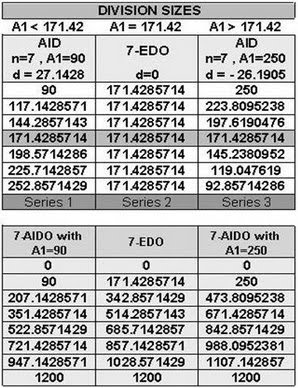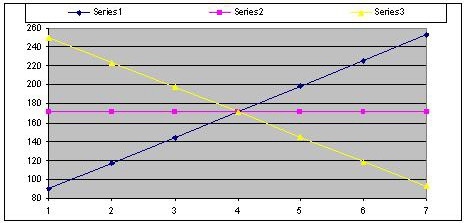AID: Difference between revisions
m external images replaced with local copy; formatting tweaks |
mNo edit summary |
||
| (4 intermediate revisions by 2 users not shown) | |||
| Line 1: | Line 1: | ||
{{todo|inline=1|cleanup|comment=If it is deprecated and cannot be updated, then just add the [[Template:Deprecated]] message box to the top of the page and delete this todo notice}} | |||
==Arithmetic irrational divisions== | ==Arithmetic irrational divisions== | ||
For an intervallic system with <u>n</u> divisions, [http://sites.google.com/site/240edo/arithmeticirrationaldivisions%28aid%29 AID] is considered as [http://www.richland.edu/james/lecture/m116/sequences/arithmetic.html arithmetic sequence] with divisions of system as terms of sequence. | For an intervallic system with <u>n</u> divisions, [http://sites.google.com/site/240edo/arithmeticirrationaldivisions%28aid%29 AID] is considered as [http://www.richland.edu/james/lecture/m116/sequences/arithmetic.html arithmetic sequence] with divisions of system as terms of sequence. | ||
If the first division is <u>A1</u> and the last , <u>An</u> , with common difference of <u>d</u> , we have : | If the first division is <u>A1</u> and the last, <u>An</u> , with common difference of <u>d</u> , we have : | ||
:: A1 = A1 | :: A1 = A1 | ||
:: A2 = A1+d | :: A2 = A1+d | ||
| Line 16: | Line 18: | ||
As we can consider <u>Sn</u> of system to be 1200 cent or anything else (octavic or non-octavic system ) then <u>d</u> is most important to make an AID with n divisions with A1. So, the common difference between divisions is : | As we can consider <u>Sn</u> of system to be 1200 cent or anything else (octavic or non-octavic system ) then <u>d</u> is most important to make an AID with n divisions with A1. So, the common difference between divisions is : | ||
:: '''d =( <u>2(Sn - nA1))/ | :: '''d =( <u>2(Sn - nA1))/(n(n-1))</u>''' | ||
By considering Sn=1200 , A1=70 , n=12 , d will be 5.454545455 and our 12-tone scale is equal to: | By considering Sn=1200, A1=70, n=12, d will be 5.454545455 and our 12-tone scale is equal to: | ||
:: '''0.0 70.0 145.455 226.364 312.727 404.545 501.818 604.545 712.727 826.364 945.455 1070.0 1200.0''' | :: '''0.0 70.0 145.455 226.364 312.727 404.545 501.818 604.545 712.727 826.364 945.455 1070.0 1200.0''' | ||
Scales based on AID can be subsets of EDO if: | Scales based on AID can be subsets of [[EDO]] if: | ||
# we choose d=0 so , A1 = Sn/n .. Consider <u>n</u>=8 and <u>A1</u>=150 , then we have 8-EDO . | # we choose d=0 so, A1 = Sn/n .. Consider <u>n</u>=8 and <u>A1</u>=150, then we have [[8edo|8-EDO]] . | ||
# for a constant <u>n</u> and different <u>A1</u>, if <u>d</u> and (Sn/A1) are integers, we have a subset of EDO or EDI (Equal divisions of Interval). | # for a constant <u>n</u> and different <u>A1</u>, if <u>d</u> and (Sn/A1) are integers, we have a subset of EDO or [[Equal-step tuning|EDI (Equal divisions of Interval)]]. | ||
Consider <u>Sn = 1400</u> , <u>n</u>=8 and <u>A1</u>=70 , then we have a subset of a 140-ED (1400.) with Degrees as 7 17 30 46 65 87 112 140 : | Consider <u>Sn = 1400</u> , <u>n</u>=8 and <u>A1</u>=70, then we have a subset of a 140-ED (1400.) with Degrees as 7 17 30 46 65 87 112 140 : | ||
:: 0.0 70.0 170.0 300.0 460.0 650.0 870.0 1120.0 1400.0 | :: 0.0 70.0 170.0 300.0 460.0 650.0 870.0 1120.0 1400.0 | ||
| Line 35: | Line 37: | ||
AID system shows different ascending, descending or linear trend of change in divisions sizes due to relation between n and A1 in AID and EDO with equal degree: | AID system shows different ascending, descending or linear trend of change in divisions sizes due to relation between n and A1 in AID and EDO with equal degree: | ||
* If choosing <u>A1</u> greater than division size in equal degree EDO , <u>d</u> is negative and <u>AID</u> is descending. | * If choosing <u>A1</u> greater than division size in equal degree EDO, <u>d</u> is negative and <u>AID</u> is descending. | ||
* If choosing <u>A1</u> smaller than division size in equal degree EDO , <u>d</u> is positive and <u>AID</u> is ascending. | * If choosing <u>A1</u> smaller than division size in equal degree EDO, <u>d</u> is positive and <u>AID</u> is ascending. | ||
* If choosing <u>A1</u> equal to division size in equal degree EDO , <u>d</u> is zero. | * If choosing <u>A1</u> equal to division size in equal degree EDO, <u>d</u> is zero. | ||
[[file:AIDO-custom-size-298-402.jpg]] | [[file:AIDO-custom-size-298-402.jpg]] | ||
| Line 58: | Line 60: | ||
[[Category:AID]] | [[Category:AID]] | ||
[[Category: | [[Category:Shaahin Mohajeri]] | ||
Latest revision as of 05:29, 20 October 2024
| Todo: cleanup If it is deprecated and cannot be updated, then just add the Template:Deprecated message box to the top of the page and delete this todo notice |
Arithmetic irrational divisions
For an intervallic system with n divisions, AID is considered as arithmetic sequence with divisions of system as terms of sequence.
If the first division is A1 and the last, An , with common difference of d , we have :
- A1 = A1
- A2 = A1+d
- A3 = A1+2d
- A4 = A1+3d
- ...
- An = A1+(n-1)d
So sum of the divisions is Sn :
- Sn =( n[2A1+(n-1)d])/2
As we can consider Sn of system to be 1200 cent or anything else (octavic or non-octavic system ) then d is most important to make an AID with n divisions with A1. So, the common difference between divisions is :
- d =( 2(Sn - nA1))/(n(n-1))
By considering Sn=1200, A1=70, n=12, d will be 5.454545455 and our 12-tone scale is equal to:
- 0.0 70.0 145.455 226.364 312.727 404.545 501.818 604.545 712.727 826.364 945.455 1070.0 1200.0
Scales based on AID can be subsets of EDO if:
- we choose d=0 so, A1 = Sn/n .. Consider n=8 and A1=150, then we have 8-EDO .
- for a constant n and different A1, if d and (Sn/A1) are integers, we have a subset of EDO or EDI (Equal divisions of Interval).
Consider Sn = 1400 , n=8 and A1=70, then we have a subset of a 140-ED (1400.) with Degrees as 7 17 30 46 65 87 112 140 :
- 0.0 70.0 170.0 300.0 460.0 650.0 870.0 1120.0 1400.0
And now for Sn=1400 and n=8,
- If A1=175.0 then we have 8-AID(1400.)
- If A1=56 then we have 700-AID(1400.) with Degrees as 28 73 135 214 310 423 553 700
- If A1=87.5 then we have 112-AID(1400.) with Degrees as 7 16 27 40 55 72 91 112
AID system shows different ascending, descending or linear trend of change in divisions sizes due to relation between n and A1 in AID and EDO with equal degree:
- If choosing A1 greater than division size in equal degree EDO, d is negative and AID is descending.
- If choosing A1 smaller than division size in equal degree EDO, d is positive and AID is ascending.
- If choosing A1 equal to division size in equal degree EDO, d is zero.
171.4285714 is point of intersection in these 3 trends:
We can have different kinds of AID:
- AIDO = Arithmetic irrational divisions of octave
- AIDINO = Arithmetic irrational divisions of irrational non-octave
- AIDRNO = Arithmetic irrational divisions of rational non-octave
- AIDRI = Arithmetic irrational divisions of rational interval
- AIDII = Arithmetic irrational divisions of irrational interval
Example: Baran scale

